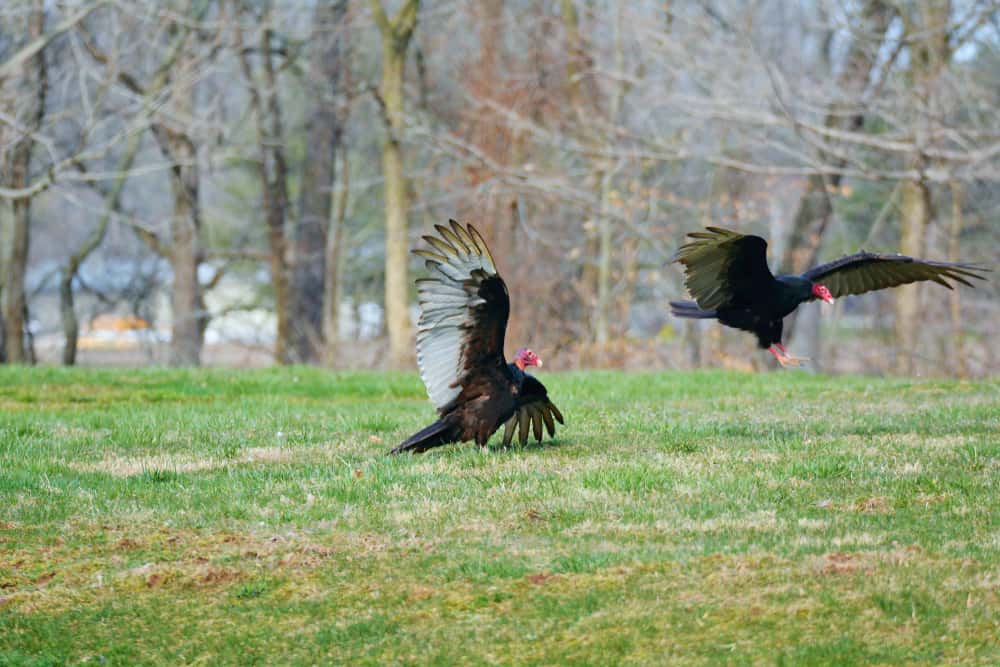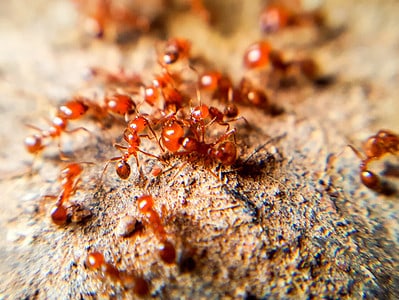Advertisement
Turkey Vulture Scientific Classification
- Kingdom
- Animalia
- Phylum
- Chordata
- Class
- Aves
- Order
- Accipitriformes
- Family
- Cathartidae
- Genus
- Cathartes
- Scientific Name
- Cathartes Aura
Read our Complete Guide to Classification of Animals.
Turkey Vulture Conservation Status
Turkey Vulture Facts
- Prey
- Carcasses
- Group Behavior
- Solitary/Group
- Estimated Population Size
- 18-28,000,000
- Biggest Threat
- Lead poisoning
- Most Distinctive Feature
- Bald, red head
- Other Name(s)
- Turkey Buzzard, John Crow, Carrion Crow
- Wingspan
- 63-72 inches
- Incubation Period
- 34-41 days
- Age Of Independence
- 80-90 days
- Age Of Fledgling
- 70-80 days
- Average Spawn Size
- 1-3
- Habitat
- Farmland, forest, and rangeland
- Predators
- Birds of Prey, Dogs, Foxes
- Diet
- Carnivore
- Favorite Food
- carrion
- Number Of Species
- 5
- Location
- North, South, and Central America
- Group
- Wake
Turkey Vulture Physical Characteristics
- Color
- Red
- Dark Brown
- Skin Type
- Feathers
- Lifespan
- 16 years in the wild
- Weight
- 2-5 pounds
- Height
- 2 1/2 ft
- Length
- 2.5 feet
- Age of Sexual Maturity
- 3-5 years
- Venomous
- No
- Aggression
- Low
View all of the Turkey Vulture images!
Summary
“Nature’s clean-up crew.”
The Turkey Vulture is also known in North America as the Turkey Buzzard, or sometimes just Buzzard. It is found from southern Canada to the tip of South America.
It is a fairly large bird with a wingspan of up to 6 feet, and can sometimes be mistaken for an eagle or osprey. These vultures are most commonly seen while driving on the open road and typically fly with their wings raised in a “V” while making wobbly circles.
3 Amazing Turkey Vulture Facts
- Not Cousins: Turkey Vultures belong to the “New World” group of Vultures. While they look similar to the “Old World” group of Vultures in Europe, they are not closely related. They evolved separately over time to develop many of the same characteristics in a process called convergent evolution.
- Strong Stomachs: A Turkey Vulture’s stomach acid is very strong so that it can digest rotting, diseased meat without harm. They also use strong acid and rancid meals as a defense mechanism. When a threat approaches, they regurgitate the contents of their stomach. The strong acid and putrid smell will deter the threat from continuing closer.
- Aerial Sharks: Tukey Vultures use their keen sense of smell to find decaying carcasses that are their main food source. The part of their brain used for smell is particularly large compared to other birds, and they detect odors that are as low as a few parts per trillion in the air.
Where to Find Turkey Vultures
Turkey Vultures are found year-round in Southern North America, Central America, and South America. They can also be found in the Northern United States and Southern Canada in the summer months.
Turkey Vultures are scavengers, so they are most frequently found near humans. They are the easiest to find while driving around open areas near woodlands, as they frequently consume the remains of “roadkill,” small animals that have been hit and killed by vehicles.
Turkey Vultures can be noticed in the sky as a group of large birds with wings in an upswept “V” and flying wobbling in circles. They use thermal updrafts to stay in the air while they use their keen sense of eyesight and smell to find their next meal.
Turkey Vulture Nests
Turkey Vultures don’t build a full “bird’s nest” that is typical of other smaller birds. They will find isolated areas that are cooler than the surroundings. Areas could include ledges or rock crevices in north-facing cliffs, caves, thickets, hollow logs, fallen trees, or even abandoned buildings.
They may arrange vegetation and leaves, scrape a spot in the soil or log, and move smaller rocks or debris. While they often are found near humans, they prefer to nest away from the activity to avoid disturbance.
Sometimes, they may reuse the same nest for many years.
Turkey Vulture Scientific name
The Turkey Vulture has the scientific name Cathartes aura. Its class is Aves and belongs to the Cathartidae family.
The common name “Turkey” comes from its resemblance to the adult’s bald red head and dark plumage of a male wild Turkey. “Vulture” comes from the Latin word vulturus, meaning “tearer,” in reference to how it eats the carcasses of deceased animals.
There are five subspecies of Turkey Vulture:
- Cathartes Aura Aura is the nominate species and is mainly found in Mexico and South America
- Cathartes Aura Jota is known as the Chilean turkey vulture
- Cathartes Aura Meridionalis is known as the Western turkey vulture
- Cathartes Aura Ruficollis is known as the Tropical turkey vulture
- Cathartes Aura Septentrionalis is known as the Eastern turkey vulture
Turkey Vulture Size, Appearance, and Behavior
Turkey Vultures are large birds, with up to a 6-foot wingspan, a length of 32 inches, and weighing up to 5.3 pounds. Their outer feathers are mostly brownish-black, with the feathers on their wings typically white/gray in color. When in flight, the wings appear to have “fingers” at the ends. Their head is small and resembles a turkey, bald with no feathers and red in color, and their hooked beak is short and white/gray in color.
A Turkey Vulture’s feet are long and typical of a bird of this size. The talons appear similar to an eagle or hawk but are not very powerful and not well suited to grasp objects or prey.
On the ground, they are awkward and have a strange, ungainly hopping walk. It takes a lot of effort to take flight, so they are slow to take flight unless threatened. During the flight, they normally travel in groups and can sometimes be seen roosting in the hundreds.

Ah…spring is in the air. These turkey vultures were participating in a mating dance.
©James W. Thompson/Shutterstock.com
Turkey Vulture Diet
Turkey Vultures are scavengers and typically eat carrion (decaying flesh of animals). They rarely attack anything living. Their keen sense of smell allows them to detect very small amounts of the odor of decaying flesh in the air as they fly.
They will typically fly in smaller and smaller circles until they zero in on the carcass. Their stomach has a high level of acid, and they can digest meat with high levels of bacteria and disease without harm to themselves.
Turkey Vulture Predators, Threats, and Conservation Status
Turkey Vultures have few natural predators, and those that are predators do not take them very often. Typical predators are golden eagles, bald eagles, red-tailed hawks, and great-horned owls. These birds may prey on older adults that are sick and/or slow.
Foxes and dogs can sneak up on them while feeding, but it is rare.
The largest threat to Turkey Vultures is eating the remains of animals that hunters have shot with lead. They consume the lead while feeding, and eventually, they die from lead poisoning at high enough levels.
Humans may also trap or kill them from the false belief that they spread disease. However, Turkey Vultures help the environment by removing rotting carcasses that may otherwise spread disease.
Reproduction, Young, and Molting
Turkey Vultures lay their eggs beginning in the spring through early summer. This depends on the region and latitude of their location. In cooler regions, they begin later in the spring through late summer.
Typically, two eggs are laid, sometimes only one, and rarely three. The eggs are white in color with dark spots around the larger diameter. The young typically hatch after 30 to 40 days.
The young are helpless when they hatch, and the parents care for them for 10 to 12 weeks. At about the same time, the young fledge can fly independently. The family will remain together until fall.
Population
Current global population estimates range between 18-28 Million. The population has been gradually increasing over the past 50 years.
The conservation status is of low concern due to the lack of many natural predators.
Similar Animals
View all 133 animals that start with TTurkey Vulture FAQs (Frequently Asked Questions)
Do Turkey Vultures migrate?
Typically, Turkey Vultures do not migrate on a regular basis. In the warmer regions, they are a permanent resident. In the cooler northern regions of the United States, they have been known to migrate as far as South America
How many eggs do Turkey Vultures lay?
Two eggs is most common. However, they can lay anywhere between one to three.
How fast do Turkey Vultures fly?
Turkey Vultures are not known for speed during flight. They use thermal updrafts to keep them in flight while they slowly wobble and use their keen sense of smell to find their next meal.
However, we do not have a exact maximum speed for these animals.
What is a Turkey Vulture's wingspan?
The typical wingspan is between 63-72 inches.
When Do Turkey Vultures leave the nest?
The hatchlings leave the nest between 10-12 weeks old.
Thank you for reading! Have some feedback for us? Contact the AZ Animals editorial team.
Sources
- All About Birds, Available here: https://www.allaboutbirds.org/guide/Turkey_Vulture/overview
- Wikipedia, Available here: https://en.wikipedia.org/wiki/Turkey_vulture
- Audobon, Available here: https://www.audubon.org/field-guide/bird/turkey-vulture
- Britannica, Available here: https://www.britannica.com/animal/turkey-vulture

















